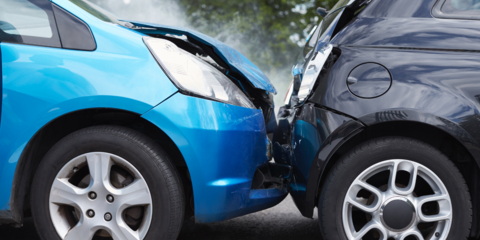
Decoding the Driving Data: A Guide to UK Car Insurance Groups
Understanding UK car insurance groups can help drivers find the best insurance deal for their vehicles.
In the UK, cars are categorised into different insurance groups to help determine insurance premiums. This system of car insurance groups aims to rate vehicles based on repair costs, value, theft rates and other risk factors. Understanding UK car insurance groups can help drivers find the best insurance deal for their vehicles.
What are Car Insurance Groups?
Car insurance groups play a major role in determining premiums. Vehicles are assigned an insurance group rating from 1 to 50 by the Motor Insurance Repair Research Centre (Thatcham Research), with Group 1 being the lowest risk category and Group 50 being the highest. The specific group rating for a car model takes into account factors like average repair costs, value of the vehicle, performance metrics like engine size and speed, safety features and crash test results and theft rates. Cars with higher repair costs, value, speed potential and criminal appeal get placed in higher insurance groups that bring increasingly expensive premiums.
Understanding the group rating system allows drivers to estimate the insurance costs of a particular make and model before purchasing.
The group rating takes into account:
- Repair costs - How much it would cost on average to repair or replace parts
- Value - The vehicle's value also affects the group rating
- Performance - Engine size and speed potential
- Safety - Results of crash testing and safety features
- Theft rates - The risk of the car being stolen
So if a car has a higher repair cost, value, performance and theft rate, it will likely be in a higher insurance group.
Differences Between Car Insurance Groups
There can be substantial differences in insurance premium costs between the 50 car insurance groups in the UK rating system. Vehicles in groups 1-3 are the cheapest cars to insure, typically small city cars with low repair costs and values, making them affordable options for new and young motorists. Groups 4-8 cover mid-range family cars and hatchbacks with reasonable premiums suitable for most drivers' budgets. Groups 9-16 start getting more expensive as they include executive models, luxury vehicles and high-performance specs which cost more to repair and attract thieves. Sports cars that are costly to insure due to their power, speed potential and appeal to criminals fall into groups 17-25. Finally, groups 29-50 are comprised of supercars and extremely high-value vehicles that only the wealthiest drivers can afford to cover due to astronomically high premiums.
Here's an overview:
- Groups 1-3 - The cheapest cars to insure, including small city cars like the Toyota Aygo. Great for new and young drivers on a budget.
- Groups 4-8 - Average and mid-range cars like a Ford Focus. Affordable to insure for most drivers.
- Groups 9-16 - Typically executive, luxury and high-spec cars like a BMW 3 Series. Premiums start getting more expensive.
- Groups 17-25 - Includes sports cars and high-performance vehicles. Insurance is more costly due to power, speed, and repair bills.
- Groups 29-50 - The most expensive cars to insure, including supercars like a Lamborghini. Only suitable for those who can afford very high premiums.
Insurance Group Checker
Many online tools and car dealerships offer free insurance group checkers by vehicle registration number. Drivers can also check on the Thatcham Research website by make and model.
Getting a quick quote and comparing insurance groups gives an idea of costs. However, the final premium also depends on other personal factors like driver age, experience, claim history and location.
How to Get a Good Deal
Downgrading to a lower insurance group is an effective way to save money on your car insurance policy. Even moving down a single group could yield considerable savings.
Here are some top tips for finding affordable cover:
- Shop around using comparison sites
- Limit your annual mileage
- Pay annually rather than monthly instalments
- Increase your voluntary excess
- Add an experienced secondary driver
- Install extra security features
Understanding car insurance groups is key for drivers looking to buy a new vehicle or get a great value insurance policy. While higher performance cars fall into costly groups, choosing an economical runaround can provide access to the cheapest cover.
